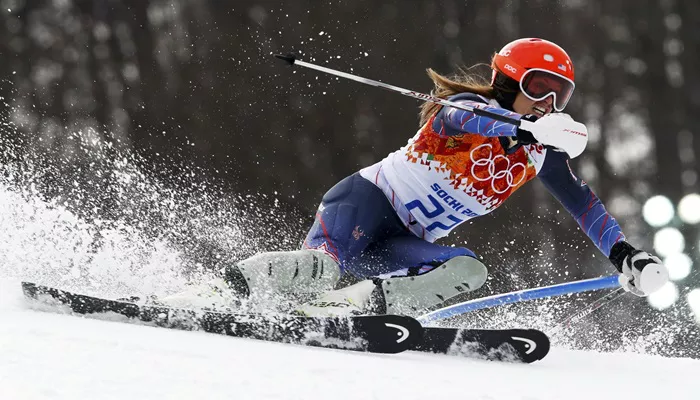Skiing is one of the most thrilling and diverse disciplines in the Winter Olympic Games, combining speed, agility, endurance, and technical precision. Olympic skiing events are categorized into multiple disciplines, each with its own unique challenges and requirements. The events range from high-speed downhill races to intricate acrobatic performances and endurance-based cross-country skiing.
This article provides a detailed breakdown of the different Olympic skiing events, their formats, rules, and what makes each one a test of athletic excellence.
Alpine Skiing
Alpine skiing, often referred to as “downhill skiing,” is one of the most popular and high-speed events in the Winter Olympics. It includes several individual races that test skiers’ ability to navigate a downhill course with tight turns, jumps, and variable terrain.
1. Downhill
Downhill skiing is the fastest of all the alpine events, with athletes reaching speeds of up to 130 km/h (80 mph). The course is long and features steep drops, wide turns, and high-speed sections. Skiers take a single timed run, and the fastest time determines the winner.
2. Super-G (Super Giant Slalom)
Super-G is a mix between downhill and slalom skiing. While it emphasizes speed like the downhill event, it also incorporates more turning elements. Unlike slalom races, where skiers get multiple runs, Super-G consists of just one run, making every second crucial.
3. Giant Slalom
Giant slalom features wider, more spaced-out gates than the standard slalom race, requiring athletes to make long, controlled turns at high speeds. Competitors complete two runs on different courses, and the combined time determines the winner.
4. Slalom
Slalom is the most technical alpine skiing event, involving tightly spaced gates that demand precise turns and quick reflexes. Athletes complete two runs, and the combined time determines the final standings.
5. Alpine Combined
The alpine combined event tests versatility by combining one downhill or Super-G run with one slalom run. The total time from both events determines the overall winner, making it a challenge for athletes who excel in both speed and technical precision.
Nordic Skiing Events
Nordic skiing includes cross-country skiing, ski jumping, and Nordic combined events, which require stamina, strength, and technical skills.
1. Cross-Country Skiing
Cross-country skiing is an endurance-based event where athletes race across long distances in a variety of formats. The primary techniques used are classic (where skis remain parallel) and freestyle (similar to ice skating).
Cross-Country Events:
Sprint (Individual & Team): Short-distance races with heats leading to finals.
10km / 15km Individual: Races where skiers compete against the clock.
Skiathlon: A combined race featuring both classic and freestyle skiing.
Relay: Teams of four compete in a long-distance race.
50km / 30km Mass Start: The longest Olympic cross-country events.
2. Ski Jumping
Ski jumping involves athletes skiing down a ramp and launching themselves into the air, aiming for the longest and most controlled jump. Judges score jumps based on distance and style. There are different ski jumping events:
Normal Hill (HS 106): Athletes jump from a smaller hill.
Large Hill (HS 140): Longer jumps due to a steeper, higher ramp.
Team Event: A team-based format where nations compete for the best combined score.
3. Nordic Combined
Nordic combined is a two-part event that combines ski jumping and cross-country skiing. Athletes first compete in ski jumping to determine their start position in a cross-country race. The skier with the best combined performance wins.
Freestyle Skiing
Freestyle skiing focuses on tricks, jumps, and aerial maneuvers, making it one of the most visually exciting Olympic skiing disciplines.
1. Moguls
Moguls are a series of bumps and jumps on a downhill course. Athletes are judged on speed, turns, and aerial tricks performed off two designated jumps.
2. Aerials
Aerials involve high-flying acrobatics where skiers launch off a ramp and perform flips and twists before landing. Scores are based on difficulty, execution, and landing precision.
3. Slopestyle
Slopestyle features a course with rails, jumps, and obstacles, where athletes perform tricks and are judged on style, execution, and difficulty.
4. Halfpipe
In the halfpipe event, skiers perform tricks while riding up and down a U-shaped pipe. Judges evaluate the amplitude, execution, and difficulty of tricks.
5. Ski Cross
Ski cross is a head-to-head race where multiple skiers compete on a track with jumps, turns, and banked sections. The first skier to cross the finish line wins, making it a high-adrenaline event.
Conclusion
The Olympic skiing events showcase the full range of skiing disciplines, from high-speed alpine races to endurance-based cross-country events and the breathtaking aerial feats of freestyle skiing. Each event requires a unique blend of skill, athleticism, and strategy, making skiing one of the most diverse and exciting aspects of the Winter Games. Whether you’re a fan of the thrilling downhill races or the technical brilliance of slalom and ski jumping, there’s no shortage of action-packed competition in Olympic skiing.

